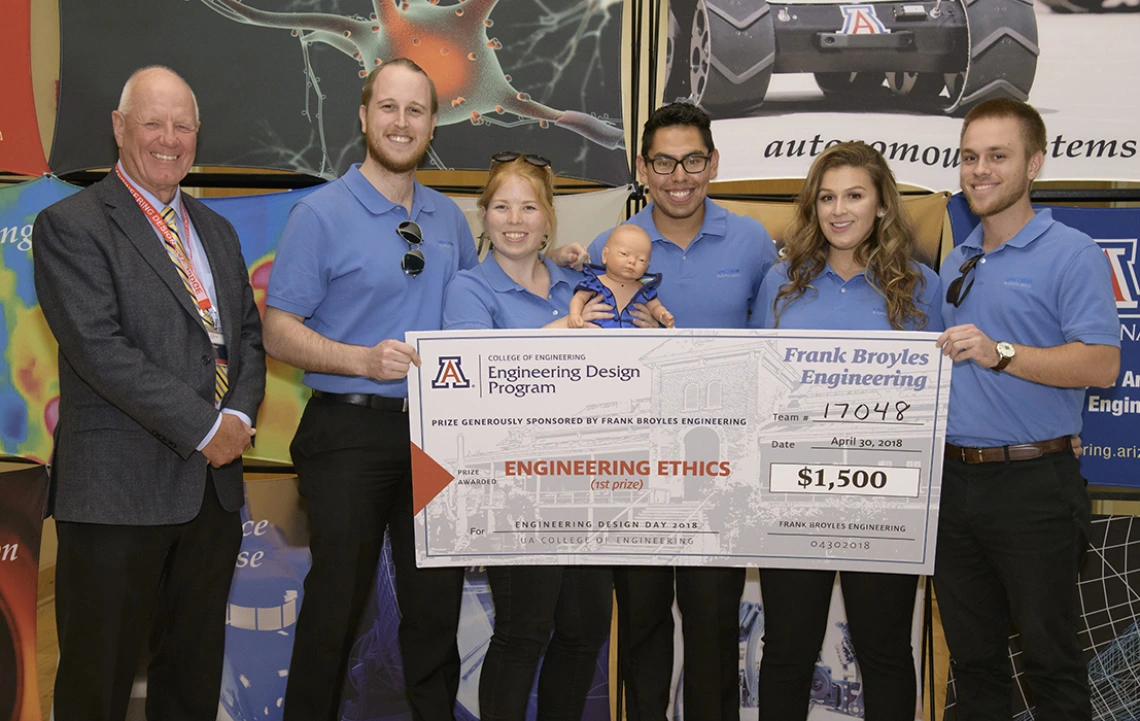Frank Broyles: From Judge to Prize Sponsor to Project Sponsor

Frank Broyles presents the Frank Broyles Engineering Ethics Award to Team 17048 at Design Day 2018.
Frank Broyles graduated from the University of Arizona with a mining engineering degree in 1968. He went on to earn his law degree from the University of Texas, and has been working as an attorney for the last 45 years.
He’s been involved in the Engineering Design Program for the last several years, first as a judge at Design Day, and then going on to sponsor the Frank Broyles Engineering Ethics Award, which recognizes a team that resolved a significant ethical issue, such as settling a conflict or resisting the temptation to take a shortcut. This year, he’s sponsoring a student project for the first time.
Though he’s had an interest in sponsoring a project for years, his career as a lawyer didn’t present many engineering challenges. It was in another part of his life, as an avid golfer, that he found a problem that needed solving.
A New Par-t of the Engineering Design Program
On par-3 holes, crews of people head out early every morning to mark places where the holes should be dug on the course, and then measure the distance between the holes and the areas where golfers tee off. They record the distances on signs so golfers can use the information to gauge how far to hit balls and which clubs to use. However, the distances are often off by 10 to 20 yards.
“It just leaves a bad taste in the mouths of golfers who are thinking, ‘I hit with a 7-iron because it said 165 yards when it was really 140, so I hit over and the ball went into the water,’” Broyles said. “But a drone can measure these distances accurately. And the lightbulb just went off in my head: I see so many drone projects here at Design Day.”
Broyles asked Team 18028 to create a drone system to measure these distances and paint the points on the green where holes should be dug. His No. 1 priority: The drones must be designed so that, even if they crash onto the green, they won’t splatter paint everywhere.
He’s flown out from Texas to meet with the team several times, and has twice even brought along a golf agronomy expert from his favorite resort to answer their questions. So far, he says the students have blown him away. Judging from the team’s critical design review, Broyles estimated an outside consulting firm would charge $50,000 to $60,000 to finish the project.
“There ought to be a waiting list for people and companies to do senior design projects, “ he said. “Because these kids do such a good job, and it’s great value for the money.”

